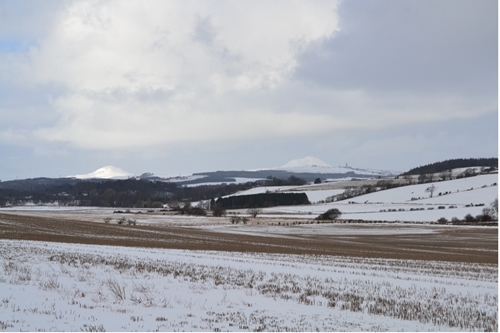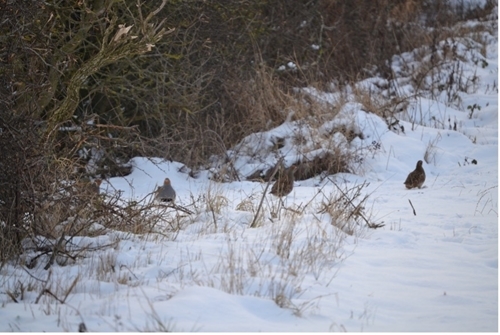Last week marked the International Day of Women and Girls in Science. So I thought it would be an apt time to reflect on my last few months as a placement student in the Scottish Lowlands research department.

“No day is the same”
 Although this expression is greatly overused, in this role, it couldn’t be more appropriate. From heading out (sometimes somewhat begrudgingly) to do a pre-sunrise partridge playback survey, to conducting hare surveys late into the evening – the variety of surveys ensures there’s never a chance of them becoming repetitive or boring. The same goes for office work. From GIS, to analysing camera trap footage – there’s a diverse number of aspects to this placement, something I find really enriching.
Although this expression is greatly overused, in this role, it couldn’t be more appropriate. From heading out (sometimes somewhat begrudgingly) to do a pre-sunrise partridge playback survey, to conducting hare surveys late into the evening – the variety of surveys ensures there’s never a chance of them becoming repetitive or boring. The same goes for office work. From GIS, to analysing camera trap footage – there’s a diverse number of aspects to this placement, something I find really enriching.
Learning on the job
As with many biologists, a career in conservation is something I’ve aspired towards for some time. And, with conservation careers being so competitive, this type of experience could make all the difference. Even during my first few months on placement, I’ve developed so many skills. This includes driving a 4x4 truck (something I was apprehensive about to begin with), mapping with GIS, and bird identification.
 For all of these skills, I am eternally grateful to Fiona Torrance, who’s been my mentor in all thing’s “partridge” during my placement. She combines the qualities of a good teacher with knowledge and patience. Definitely patience! I’ve had to learn some things for myself, most notably, how to generate the perfect layering system and render myself invincible to the cold. These kinds of skills have given me a far better understanding of what it is to have a career in conservation work.
For all of these skills, I am eternally grateful to Fiona Torrance, who’s been my mentor in all thing’s “partridge” during my placement. She combines the qualities of a good teacher with knowledge and patience. Definitely patience! I’ve had to learn some things for myself, most notably, how to generate the perfect layering system and render myself invincible to the cold. These kinds of skills have given me a far better understanding of what it is to have a career in conservation work.
Farmland – a haven for wildlife
One of the biggest surprises I’ve had since beginning this placement is the abundance of farmland wildlife. Species range from raptors (who seem to be out at all times except when we are conducting raptor transects), woodcock and roe deer – to (and naturally the greatest of all) grey partridges.
I spend much of my time working on the Interreg PARTRIDGE project. Before starting this placement, I had never even seen a partridge. Now I feel fairly well-acquainted with these birds – particularly when conducting partridge playback surveys. Probably my favourite survey thus far, there’s nothing quite as comical as playing partridge sounds in the dark and waiting for the males to call back crossly.

The early bird gets the worm
 As I think I may already have mentioned, I’m not always enthusiastic about waking up before sunrise. The upside, however, in doing so means I’ve been able to appreciate farmland wildlife that much more. When out at dusk or dawn, I get to see nature undisturbed, which can mean standing just feet away from a young buck trying hard to remain undetected – or watching a group of hares hop across the untouched snow. I’m exceptionally grateful for these moments. Not only this, but dawn and dusk surveys are often accompanied by a beautiful sunrise or sunset. Having to spend so much time outside has allowed me to admire the natural world in all its glory.
As I think I may already have mentioned, I’m not always enthusiastic about waking up before sunrise. The upside, however, in doing so means I’ve been able to appreciate farmland wildlife that much more. When out at dusk or dawn, I get to see nature undisturbed, which can mean standing just feet away from a young buck trying hard to remain undetected – or watching a group of hares hop across the untouched snow. I’m exceptionally grateful for these moments. Not only this, but dawn and dusk surveys are often accompanied by a beautiful sunrise or sunset. Having to spend so much time outside has allowed me to admire the natural world in all its glory.
Looking forward
During my relatively short time on placement, I’ve already learnt so much. I’m very much looking forward to the year ahead – and to seeing lots more partridges (and hoping for warmer weather!)
Written by Elizabeth Fitzpatrick, Scottish Lowlands placement student